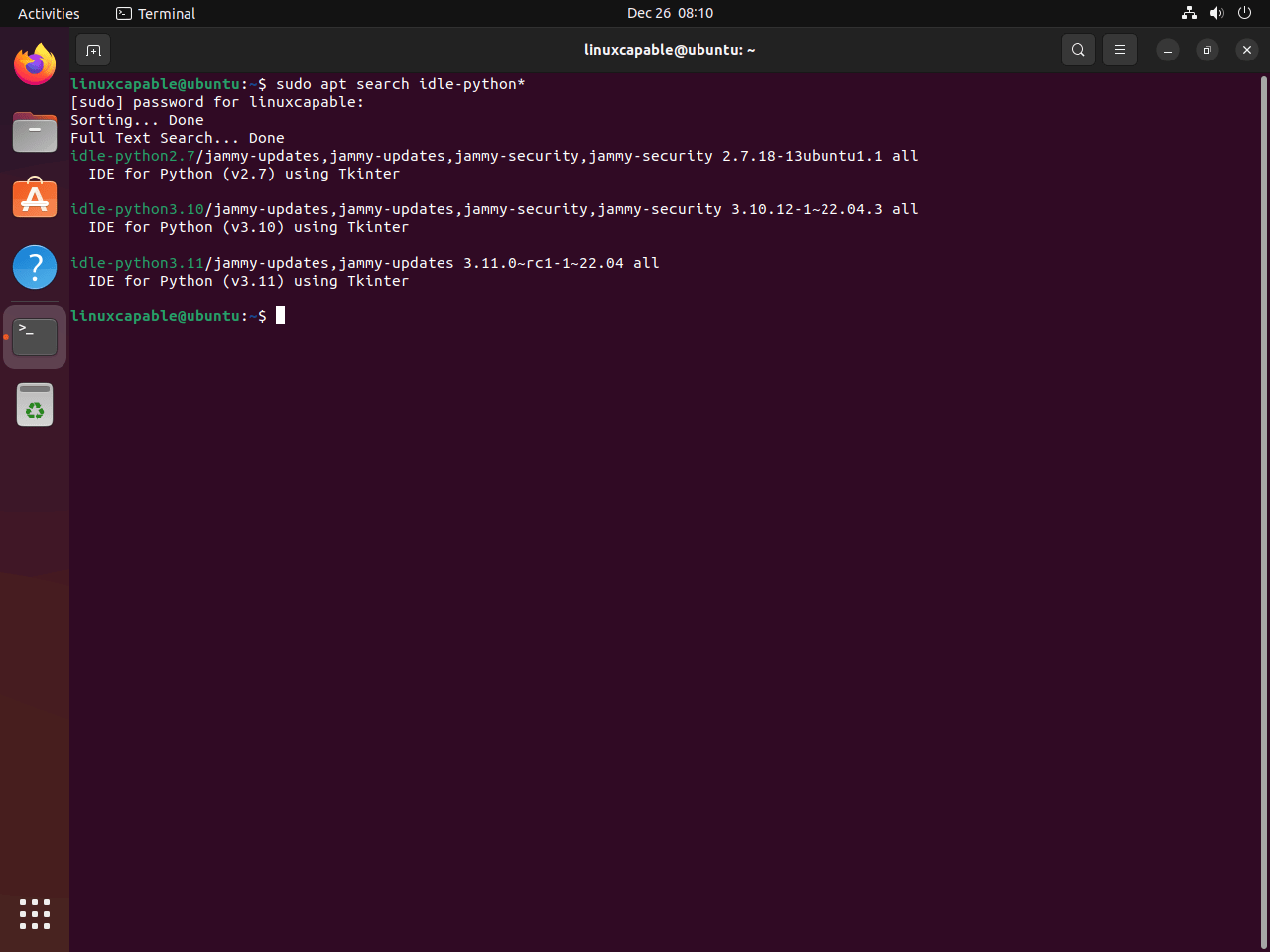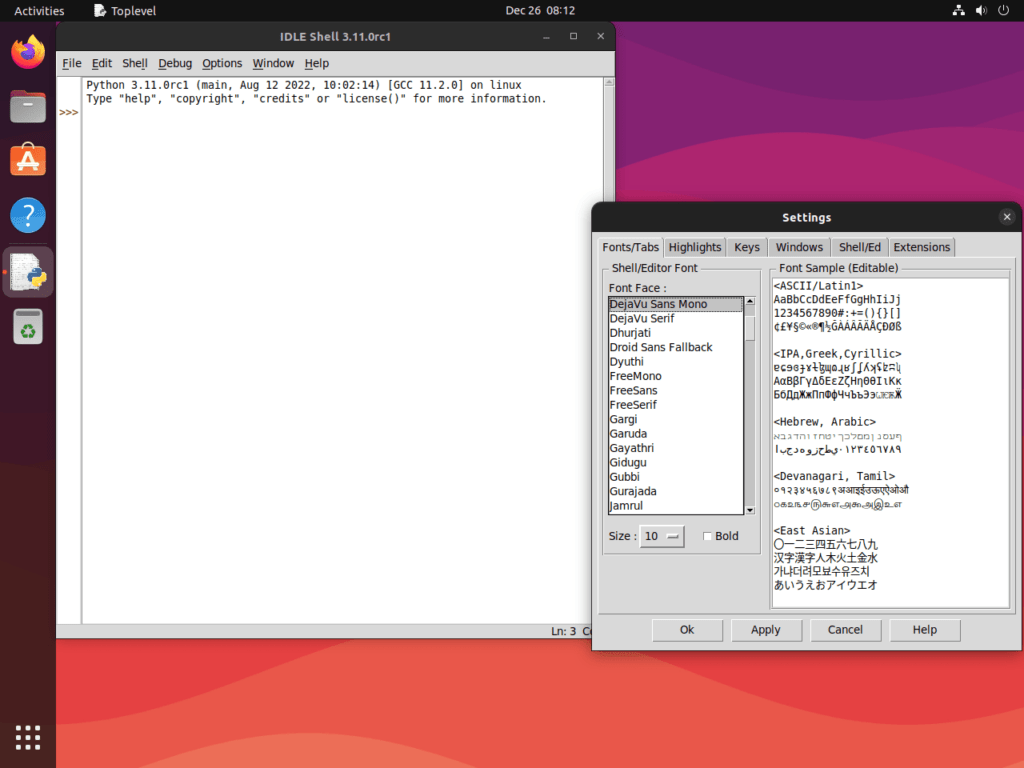IDLE Python is a lightweight yet powerful development environment that is particularly adept for beginners and seasoned programmers working with Python. It’s an integral tool for developers who manage server-side applications, including those built on CMS systems like WordPress using PHP-FPM. The simplicity and functionality of IDLE Python cater to a wide range of programming tasks, making it a go-to choice for Python coding.
Below are some of the key features of IDLE Python:
- Interactive Interpreter: Provides real-time feedback, which is ideal for experimenting with Python code.
- Syntax Highlighting: Enhances code readability, a boon for long coding sessions.
- Integrated Debugger: Simplifies troubleshooting by allowing step-by-step code execution.
- Auto-Completion: Speeds up coding by suggesting relevant Python constructs.
- Multi-window Text Editor: Supports editing multiple files simultaneously, boosting productivity.
- Cross-Platform Compatibility: Works seamlessly across different operating systems.
These features collectively make IDLE Python a robust platform for developing Python applications, including backend systems for CMS-driven websites. Its user-friendly interface and comprehensive tools offer a conducive environment for coding, debugging, and testing Python scripts. With IDLE Python, managing server-side logic and integrations for CMS platforms becomes more efficient, especially for those dealing with dynamic content management and server-side scripting.
Now, let’s explore the technical details of installing IDLE Python on Ubuntu to ensure a smooth and successful setup.
Update Ubuntu Before IDLE Python Installation
To initiate the installation process effectively, update your Ubuntu system. This action not only enhances security but also ensures optimal system performance.
Execute the following command in the terminal to update all existing packages:
sudo apt update && sudo apt upgradeInstall IDLE Python via APT Command
IDLE Python installation is streamlined and depends on the version of Python you intend to use. First, discover the available IDLE Python packages suitable for your system using the apt search command. This step helps you identify the correct version of IDLE Python that aligns with your Python environment. To search for available IDLE Python packages, execute:
sudo apt search idle-python*
Following the search, install the specific version of IDLE Python that meets your requirements. For example, to install IDLE Python 3.11 on Ubuntu, the command would be:
sudo apt install idle-python3.11This command installs the corresponding IDLE Python version, ensuring compatibility with your current Python setup.
Launch IDLE Python
Launching IDLE Python via Terminal
Once IDLE Python is installed on your Ubuntu system, you can easily start it using the terminal. This method is efficient and widely used by developers who prefer command-line interfaces. To launch IDLE Python, enter the following command in your terminal:
idleLaunching IDLE Python from the Desktop
For desktop users who favor graphical interfaces, launching IDLE Python is straightforward. This method is particularly user-friendly and suitable for those who prefer navigating the desktop environment. Follow these steps to open IDLE Python from your desktop:
- Click on Activities at the top left corner of your screen.
- Select Show Applications.
- Scroll to find IDLE Python followed by the specific version number you installed.


First-Time Tips for IDLE Python
Managing IDLE Python
Update IDLE Python
Regular updates are vital for maintaining software performance and security. Even if your desktop GUI is set to auto-update, it’s recommended to manually update your system packages and IDLE Python using the terminal. This ensures that you have the latest patches and improvements.
To update, execute the following command:
sudo apt upgrade && sudo apt upgradeThis command first refreshes your package lists with sudo apt update and then upgrades all your installed packages to their latest versions with sudo apt upgrade, including IDLE Python.
Remove (Uninstall) IDLE Python
If you no longer need IDLE Python on your system, uninstalling it is straightforward. The command you use depends on the version of IDLE Python you have installed.
To remove the software, use the command:
sudo apt remove idle-python{version}Replace {version} with the specific version of IDLE Python you installed. For example, if you have IDLE Python 3.11, the command would be sudo apt remove idle-python3.11. This command removes IDLE Python from your system, freeing up space and resources.
Conclusion
This guide covers a lot, from installing and launching IDLE Python on Ubuntu to managing its updates and even uninstalling it. Remember, the key to mastering any software like IDLE Python lies in regular practice and keeping it updated. Don’t be afraid to explore its features and customize it to your liking. Most importantly, keep coding and experimenting because that’s where the real learning happens.

